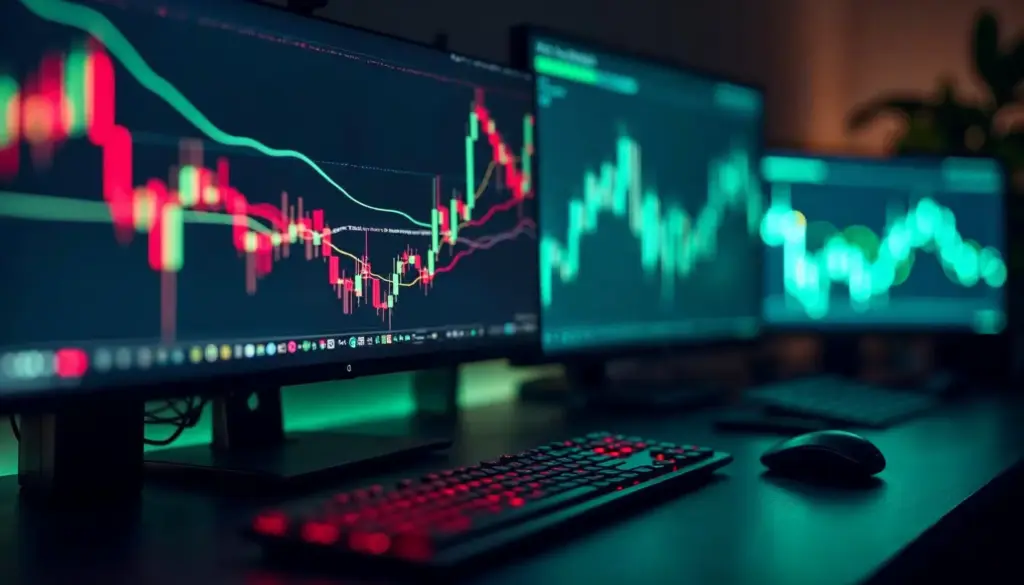From Metals to Miles: How to Surf the Post-Conflict Relief Rally

Opening Scene: When One Headline Changes Everything
Late Sunday, Washington journalists broke the story: Iran had quietly asked Gulf intermediaries to broker a cease-fire with Israel. By the time Asia opened, Brent crude had slipped almost two dollars, gold was down more than one percent, and S&P futures were pointing to a gap-up open. Seasoned macro traders recognized the pattern: risk premium evaporates, cyclicals catch a bid, and defensive positioning unwinds in a hurry.
1. Feedback Loop: Oil → Inflation Expectations → Dollar
Here is why that matters beyond energy: cheaper crude lowers forward breakeven inflation, which nudges real U.S. yields south. A softer real-rate structure erodes the dollar’s carry advantage, boosting everything from Aussie to copper. Monday delivered a textbook case: DXY slipped 0.17 %, EUR/USD punched to 1.16, and AUD/USD notched a seven-month high. Those moves, small on the surface, matter disproportionately for commodity-linked equities whose revenues are dollar-denominated and costs local.
2. Airlines: Anatomy of a High-Beta Hedge
Delta, United, American, and Southwest each hedge less than a third of next-twelve-month fuel needs. Every $1 fall in jet fuel translates to up to $0.35 incremental EPS for Delta. Options provide cheap convexity: thirty-day at-the-money implied vol in DAL stands at just 32 %, near the bottom quartile of its one-year range. A simple vertical—buy the August $45 call, sell the August $50 call—returns roughly 3.7 × premium at the $50 cap, while a short $40 put finances half the debit. The payoff mimics delta-one upside with half the downside theta.
3. Copper: China’s Incremental Demand Pulse
China’s May retail-sales beat wasn’t enormous in absolute terms, but against a backdrop of sagging industrial output it rekindled the “consumer-led reflation” narrative. Investors punished base-metal equities for months on weak PMI data; one upside surprise was enough to bring CTA buy-triggers into play. London-traded copper closed above its twenty-day channel, pushing algorithmic positioning from net short to net flat in a single session. Historically, that flip adds an average 260 basis points to copper miners over the next ten sessions—with Freeport and Southern Copper the usual outperformers.
4. Critical Minerals: The G7’s Industrial-Policy Pivot
G7 leaders in Alberta unveiled a draft strategy to underwrite critical-mineral supply chains, explicitly citing the need to counter single-supplier risk. The communiqué, while short on binding numbers, is long on intent: direct financing, offtake guarantees, and strategic stockpiles for lithium, nickel, and rare earths outside Chinese control. For equity investors that means Albemarle’s Kings Mountain restart, MP Materials’ Mountain Pass expansion, and Piedmont-Tesla’s spodumene offtake deal instantly look more bankable. Volatility on these names tends to spike on policy headlines; writing July covered calls can harvest 2–3 % weekly theta while retaining upside delta.
5. Tariff Truce: A New Frontier for UK Mid-Caps
Prime Minister Starmer’s comment that a comprehensive trade deal is “very near completion” sounded boilerplate—until he detailed aerospace tariff relief and auto‐quota waivers. Rolls-Royce derives 25 % of Power Systems revenue from the U.S.; a 10 % tariff rollback boosts EBIT by an estimated £70 million. Even more sensitive are mid-caps like Meggitt and drivetrain maker GKN, where a single large U.S. frame order swings annual earnings. Liquidity is the constraint; small-cap float demands strict position-sizing and a willingness to use ADRs or CFDs outside London hours.
6. Scenario Stress-Tests: Because Headlines Cut Both Ways
- Tariff Escalation Redux: EU-U.S. talks on steel could stall, reviving tit-for-tat duties. Hedge UK exporter longs with long-dated DXY calls.
- BoJ Surprise: A premature taper or outright rate hike could spike JPY, dragging global risk lower. Use USD/JPY 140 puts as disaster insurance.
- Oil-Supply Shock: A single sabotage incident at a Hormuz loading terminal cancels the airline thesis. Buy December Brent $85 calls with partial proceeds from covered-calls written on copper miners.
7. Turning Volatility Into Yield
Event-rich calendars inflate front-month vol, offering income. For copper bulls, sell one-month 110 % covered calls on FCX (implied vol ~40 %, theta ~2 %-weekly) and purchase a same-expiry 95 % put—yielding a zero-premium collar that clips upside only modestly but immunizes the position against a surprise Fed hawk-tilt.
8. Portfolio Blueprint: The 40/30/20/10 Mix
Allocate forty percent of risk budget to high-conviction longs (airlines, copper), thirty percent to trade-deal beneficiaries (UK exporters), twenty percent to protective structures (oil calls, DXY calls), and keep ten percent cash for fast drawdowns. That ratio maximizes exposure to the growth-premium narrative while still respecting the fragile geopolitical backdrop.
Closing Thoughts
Markets rarely pivot from “war-premium” to “growth-premium” without whipsaws, yet the current constellation—cheaper oil, softer yields, dovish-leaning central banks—creates a tactical runway for cyclical equities. Airlines gain instant EBIT leverage from fuel relief; copper miners ride China’s incremental demand; lithium plays benefit from G7 industrial policy; and UK exporters finally shake off tariff overhangs. The rally’s longevity depends on whether the week’s policy meetings ratify or refute the new macro mood. Trade the narrative aggressively, but build exits as carefully as entries—because geopolitics, like volatility, never sleeps.
